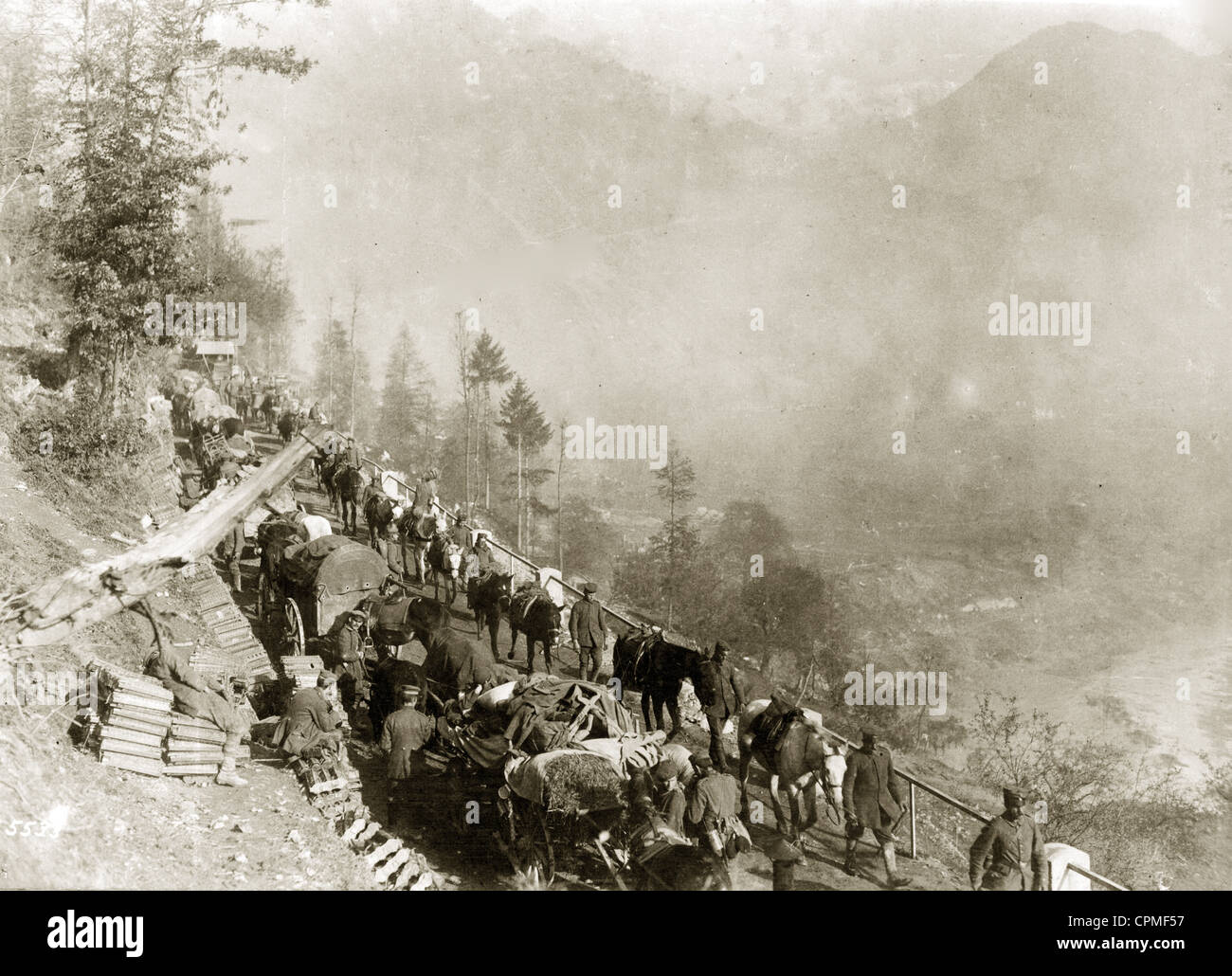
The heaviest fighting occurred around Gorizia where Italian troops were able to advance as far as the suburbs, only to be later repelled. The Austrians had the advantage of fighting from uphill positions barricaded with barbed wire which were able to easily resist the Italian assault. Although the Italians enjoyed a 2:1 numeric superiority, their offensive failed because the Italian commander, Luigi Cadorna, employed frontal assaults after impressive (but short) artillery barrages. The aim of the Italian Army was to drive the Austrians away from its defensive positions along the Soča (Isonzo) and on the nearby mountains. The First Battle of the Isonzo was fought between the Armies of Italy and Austria-Hungary on the Italian Front in World War I, between 23 June and 7 July 1915. Many Romans were taken into captivity, and did not regain their freedom until Theodoric ransomed them three years later.FIRST BATTLE OF THE ISONZO | ITALY IN WW1 While both were fully engaged, the Burgundians seized the opportunity to plunder and devastated Liguria. Odoacer emerged from Ravenna and started to besiege his rival.

Theodoric had no reason to doubt Tufa's loyalty and dispatched his new general to Ravenna with a band of elite soldiers, "but Tufa changed sides, the Gothic elite force entrusted to his command was destroyed, and Theodoric suffered his first serious defeat on Italian soil.” Theodoric recoiled by seeking safety in Ticinum. While Odoacer took refuge in Ravenna, Theodoric continued across Italy to Mediolanum, where the majority of Odoacer's army, including his chief general Tufa, surrendered to the Ostrogothic king. Theodoric followed him and three days later defeated him again. He withdrew to Verona, reaching its outskirts on 27 September, where he immediately set up a fortified camp. On 28 August, Odoacer met him at the Isonzo, only to be defeated. In 489, Theodoric led the Ostrogoths across the Julian Alps and into Italy. Within a year, Zeno had him assassinated. Armatus defected from Basiliscus to Zeno in 476, and was made senior imperial general for life. When Theodoric rebelled in 485, he had in mind Zeno's treatment of Armatus. Theodoric had his own reasons to agree to this offer, as he had enough experience to know (or at least suspect) that Zeno would not, in the long term, tolerate his independent power. Thus Zeno sought to destroy Odoacer and promised Theodoric the Great and his Ostrogoths the Italian peninsula if they were to defeat and remove Odoacer. According to John of Antioch, Odoacer exchanged messages with Illus, who had been in revolt against Zeno since 484. When Julius Nepos was murdered by two of his retainers in his country house near Salona (May 480), Odoacer assumed the duty of pursuing and executing the assassins, and at the same time established his own rule in Dalmatia.Īs Odoacer's position improved, Zeno, the Eastern Emperor, increasingly saw him as a rival. Clover dates this cession to September or October 476.

Noting that "Odovacar seized power in August of 476, Gaiseric died in January 477, and the sea usually became closed to navigation around the beginning of November", F.M. He achieved a solid diplomatic coup by inducing the Vandal King Gaiseric to cede to him Sicily.

At the beginning of his reign he "slew Count Bracila at Ravenna that he might inspire a fear of himself among the Romans." He took many military actions to strengthen his control over Italy and its neighboring areas. Unlike most of the last emperors, he acted decisively. In 476, the barbarian warlord Odoacer founded the Kingdom of Italy as the first King of Italy, initiating a new era over Roman lands.


 0 kommentar(er)
0 kommentar(er)
